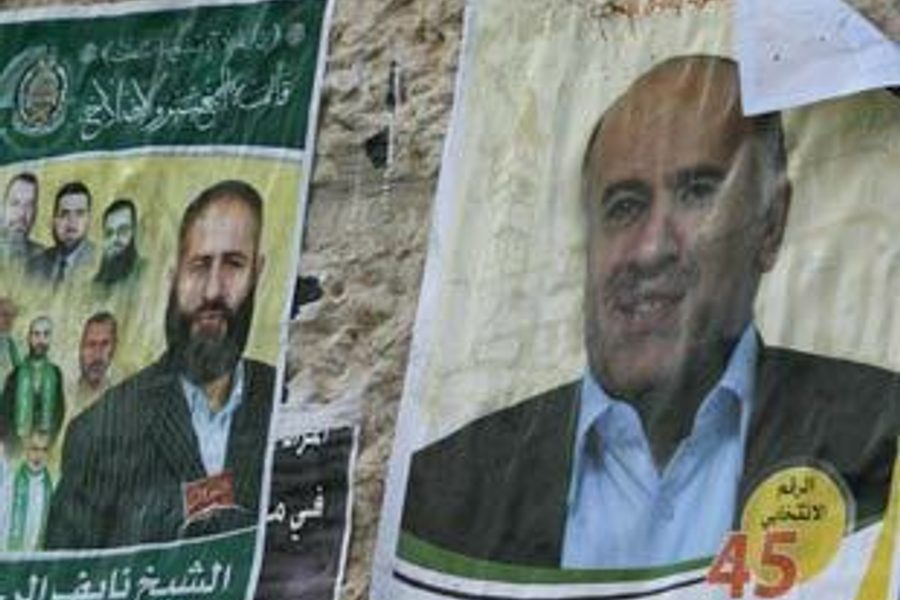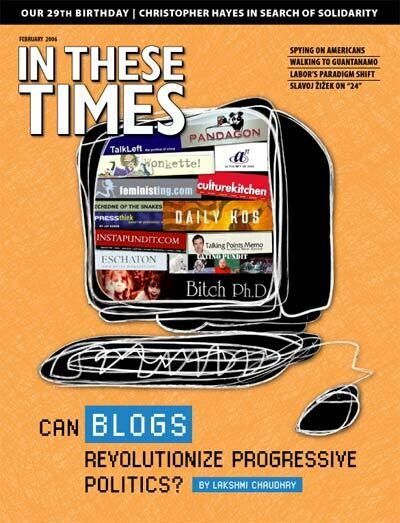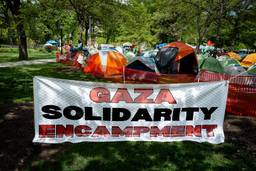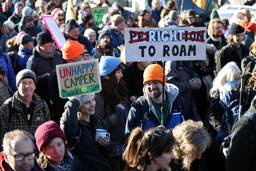
Both the Israeli and Palestinian political arenas are in turmoil. In Israel, Prime Minister Ariel Sharon’s stroke has left the country and his newly established party, Kadima, in disarray. In the Palestinian territories, the ruling Fatah party is rapidly losing popular support, and the Islamist party Hamas is gaining ground. Paradoxically, Hamas’ steady ascent is part of Sharon legacy, while its imminent victory in the upcoming elections will help Israel’s new leader transform Sharon’s political vision into reality.
Sharon, the father of Israel’s unruly settlement enterprise and the person responsible for thousands of deaths in the Lebanon debacle, including the Sabra and Shatila massacre, altered his strategic thinking during the last couple of years. After leading Israel’s efforts to expropriate Palestinian land for three decades, Sharon finally realized that as the messianic and militaristic visions of a greater Israel became reality and the border between Israel proper and the territories it occupied in 1967 was erased, the very idea of a Jewish state, where Jews are the majority, was being “threatened.” While he considered the annexation of the West Bank and Gaza appealing from a geographic point of view, he joined the vast majority of Israeli Jews who feel endangered by the fact that today the majority of people living between the Jordan Valley and the Mediterranean Sea are not Jewish.
For years this demographic “threat” was kept at bay by denying the occupied Palestinians Israeli citizenship and subjecting them to military rule. Israel, in other words, created an apartheid regime in the West Bank (and Gaza) in order to sustain the Jewish majority within its borders. It installed dual legal systems within a single territory, one for Jews, the other for Palestinians. This incongruence between Israel’s geographic aspirations and demographic reality led to a political juncture whereby it had to choose one of two options: continue maintaining a system of apartheid or, conversely, give up the idea of a Jewish state.
Sharon decided to adopt a third way. He withdrew from the Gaza Strip and made plans to annex several parts of the West Bank so as to radically alter the region’s demographic and geographic reality. He used the separation barrier – which is made up of electronic fences, barbed wire, patrol roads, trenches and massive concrete slates – as the means to unilaterally implement his political vision. Thus, even though the barrier is constantly presented as a “temporary” security apparatus, in reality its primary objective is to redraw the map between Israel and the Palestinian entity.
Demographically, the barrier will surround 56 Jewish settlements from the east, annexing the land that they now occupy so that 171,000 West Bank settlers will be incorporated into Israel’s new borders. The wall being built in East Jerusalem is meant to reinforce the 1967 annexation of this part of the city, and to legitimize the 183,800 Jewish settlers living there. If the barrier does indeed become the new border it will solve the problem posed by about 87 percent of Israel’s illegal settlers. The remaining 13 percent, or 52,500 settlers, will have to be forcibly evacuated, like the Jewish settlers in the Gaza Strip.
Geographically, the barrier is meant to enlarge Israel’s internationally recognized territory by annexing West Bank land, while creating self-governing enclaves for the Palestinians. The barrier’s route cuts up the Palestinian territory into 16 small internal enclaves containing specific villages, towns or cities. In addition, it cuts the West Bank in at least two (north/south) and perhaps four larger enclaves (the north is divided into three parts, north of Ariel, south of Ariel and south of Jericho). Taking the Gaza Strip into account, it becomes clear that when the barrier is complete, the future Palestinian “state” will be made up of three to five main regions.
The regions will be closed off almost completely from each other, while Israel will continue to effectively control all of the borders so that it can implement a hermetic closure whenever it wishes. What is new about the barrier is not the attempt to create enclaves in the Occupied Territories, but the effort to transform these enclaves into quasi-independent entities that will ostensibly form a Palestinian state.
It is not surprising that Sharon’s unilateral solution has in the past two years been sowing the seeds of hatred. One would expect the international community to condemn Israel’s myopic unilateralism. Yet now more than before there is a good chance that once Sharon’s successors try to secure international approval for his program they will receive widespread support, since in the struggle against Islamic fundamentalism, everything is permitted.
This is where Hamas enters the picture. Hamas, an abbreviation of Harakat al-Muqawama al-Islamiyya, namely, Islamic Resistance Movement, was founded in 1987 by Sheik Ahmad Yasin at the outbreak of the first Palestinian Intifada. While Hamas tends to be identified with its military arm, Izzeddin al-Qassam, well known for its attacks on Israeli targets, it has always also been a vibrant political and social movement. It has kindergartens and schools that offer free meals for children, education centers for women, and youth and sports clubs. Its medical clinics offer subsidized treatment to the sick and it extends financial and technical assistance to those whose homes had been demolished and to refugees living in sub-standard conditions. Thus, ever since its establishment, Hamas has offered Palestinians extensive community services and has responded constantly to the changing political reality by making pragmatic decisions.
The changing power relations within Palestinian society, in which the ruling Fatah party has lost many of its supporters to Hamas, will no doubt help Israel advance its unilateral solution. As In These Times went to press, it seemed highly likely that Hamas would become the largest party in the Palestinian territories in the January 25 elections, if not winning them outright. This will benefit Sharon’s heir, since it will help him convince not only the United States but also Europe to back Israel’s intent to establish new borders, turning a blind eye to the ongoing violation of Palestinian rights that Israel’s unilateral action entails. Ultimately, this will leave the Palestinians both rightless and stateless.
Sharon, a brilliant strategist, seems to have recognized this long ago, and over the years implemented policies that have strengthened Hamas. The International Crisis Group has shown, for example, that Hamas has been empowered by the economic calamity caused by Israeli assaults and closures. The resulting economic disaster created a gap that Hamas’ charitable organizations could fill and the Palestinian Authority could not. Thanks to Sharon’s military and economic policies in the Occupied Territories, practically all doors have been closed except, of course, the mosque doors.
Sharon’s actions during his tenure as prime minister strengthened Hamas, while Hamas’ ascendancy in the Palestinian street will ultimately enable Sharon’s followers to pursue his plans unhindered.







